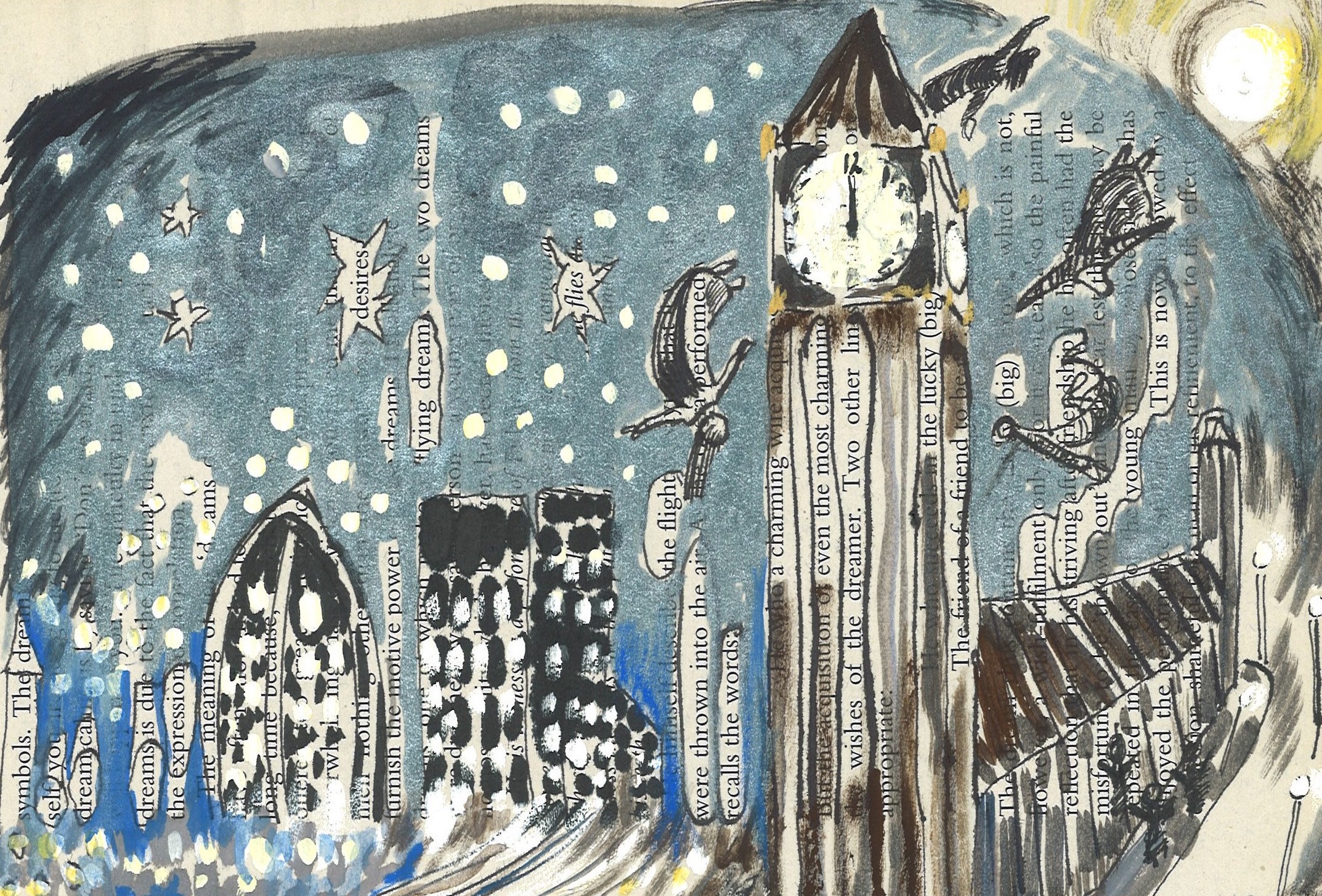Working with Clients’ Dreams: The Ullman Method
-
-
Mark Blagrove
When a dream is brought to therapy we may welcome it as a gift. But practitioners can also feel unprepared, put on the spot, puzzled by vastly different theoretical attitudes and unsure where to begin. Mark Blagrove, Professor of Psychology and author of a new book about the science and art of dreaming, outlines a simple yet enlightening technique devised by the psychoanalyst Montague Ullman – one that might help therapists develop confidence and curiosity when encountering clients’ dreams, and increase our empathy too.

(Image: Julia Lockheart, DreamsID.com, 'painting of a lucid flying dream told to us by a student at University of California Los Angeles')
Dreams can be a useful tool in psychotherapy and counselling. They can enable the broaching of difficult subjects or experiences, indicate metaphors for the client’s experiences, enable the experience of strong emotions, and map the progress of the therapy.
However, therapists, and especially those from the clinical psychology field, may be unprepared in responding to the telling of a dream. This can have an adverse effect on the client-therapist relationship for circumstances where the ‘gift’ of the dream is not acknowledged in a welcoming, reciprocating and intrigued manner.
Therapeutic practice may range from marginalising dreams to having a highly theoretical stance towards them. All therapists within that wide range of responses to dreams might benefit from the relatively atheoretical approach put forward by psychoanalyst Montague Ullman in his (2006) book Appreciating Dreams: A group approach.
Ullman proposed that much of the content of dreams derives from experiences and emotions from the days immediately preceding the dream. He developed a method by which the details of the dream and then the details of recent waking life can be explored separately before being brought together to identify mappings between them. The method entails a series of very separate stages and he cautioned about the necessity for adhering to the contents and boundaries of the stages.
The method is undertaken in a group, because of blind spots that can result if a person examines their dreams on their own, and it is applicable to one-to-one sharing. The method is not designed for professional therapeutic use – Ullman devised it due to his wish for dreams to be more widely appreciated, explored and honoured across the lay population. But knowledge of the method may be beneficial to therapists and counsellors.
Ullman’s dream appreciation technique involves the following stages:
- 1A. Reading of the dream aloud in as much detail as possible by the dreamer, and including the presence of any emotions.
- 1B. Clarification of the dream report by the group asking questions of the dreamer.
- 2A. Brief discussion of the dream by the group members other than the dreamer so as to imagine what feelings they would have experienced if the dream were their own, and then;
- 2B. Briefly eliciting these individuals’ projections about the dream in terms of their own lives so as to give their symbolic or metaphorical meaning to the dream images as if it were their own dream. An aim of this stage is to illustrate to the dreamer how connections may be made between waking life and dream reports. In stage 2 the group members do not address or make eye contact with the dreamer, who at this point only listens.
- 3A. Response by the dreamer to stage 2. The dreamer is not obliged to respond to what was said during stage 2 but can comment on whether statements made in stage 2 were relevant or not relevant to him/her.
- 3B.1 Description by the dreamer of his/her waking life context for the dream, in terms of the dreamer’s life experiences, with particular emphasis on recent experiences and concerns. This stage can also include the dreamer’s associations to the dream where these associations give information about the dreamer’s waking life.
- 3B.2 Reading the dream back to the dreamer, in the second person, so that any additional information about the dream or the dreamer’s waking life can be obtained.
- 3B.3 Orchestration, in which all members of the group suggest connections between information that the dreamer has given about his or her dream and information the dreamer has given about the dreamer's life.
Many papers and documents by Montague Ullman can be seen here. I have shown in experiments that the Ullman method can result in personal insight by the dream-sharer, and results in increased empathy towards the dream-sharer from those with whom the dream is discussed. I use the method in the DreamsID science art collaboration I have with artist Julia Lockheart, and detail the method, and its practical and theoretical implications in our book The Science and Art of Dreaming. This includes the application of the method to the two dreams told by ‘Dora’ to Sigmund Freud.